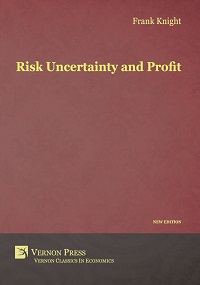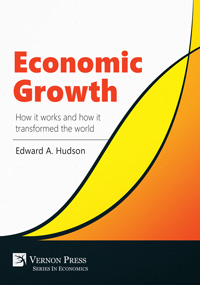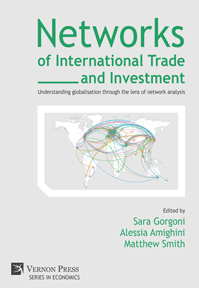Financial reforms, stabilization and development in 21st-century Turkey
by Haluk Haksal (University of Geneva, Switzerland)
Purchase this book
(click here to change currency)
"This study examines the adaptation of Turkey’s financial market regulations to EU requirements. For this purpose, the author undertakes a multi-dimensional study of the evolution of Turkey’s economy in recent decades. Specifically, the author focuses on the key problems associated with the transition towards a market economy such as the deregulation of financial markets, the role of institutions and institutional change, monetary stability and the performance of the central bank. At the end of the volume, important and useful lessons are presented on the basis of this case study. All in all, the volume offers a solid, theoretically informed and multi-faceted account of the struggles faced by a developing country and the mixed results that emerge as it attempts a transition towards a market economy."
Professor Sevket Pamuk,
Bogazici University, Turkey
The central argument of this book is that while central bank independence can contribute to stabilization, inflation-targeting monetary policy is quite powerless in promoting economic development. The basic message is simple: Policy makers should not strive to achieve price stability at any cost, as stability in product markets does not necessarily translate into economic development. The recent experience of Turkey is illuminating and other developing countries, in particular those using inflation targeting monetary policy framework, can draw useful lessons from this experience.
Early chapters summarize the deregulation process from 1980 to 2001. The Turkish Central Bank is placed at the center of the analysis as monetary policies have a significant impact both on stability and development. Although the 1994 and 2001 financial crises have been extensively studied elsewhere, they are nevertheless summarized to underscore the importance of central bank independence. Later chapters investigate the impact of an independent central bank on stabilization and development from 2001 onwards.
Upon visiting the Turkish Central Bank's website, readers are greeted with the following statement:
"The primary objective of the Bank is to achieve and maintain price stability." By the end of this book the reader should be able to assess the relative merits of a monetary policy that focuses on price stability, versus an alternative where price stability is accompanied by other objectives targeting development, for instance, monitoring also unemployment rates, which would undermine its independence to some degree. The study aims to provide a perspective on the need for such an alternative in line also with the vision of some international agencies on development, such as the UNCTAD and the ILO.
This is the first book-length study examining the financial reforms Turkey undertook in its path towards EU accession. This unique work will be of interest to economists and other experts in financial history, (de)regulation, institutional economics and economic development, as well as a broad range of scholars interested in the dramatic transformation of Turkey's economy and society in the 21st century.
Chapter 1: Introduction-hypotheses and research questions
1.1 Background to the research
1.2 Research problem - hypotheses - research questions
1.3 Context of the book
1.4 Justification of research and Methodology
1.5 Book outline
1.6 Scope of the book
1.7 Definition: an additional 11th principle to the “Washington Consensus”
1.8 Delimitations of scope and assumptions
1.9 Conclusion
Chapter 2: Deregulation Process and Macroeconomic Stability
2.1 Washington Consensus
2.1.1 The impact of the “Washington Consensus” principles in an emerging market: Thailand during the 1990s
2.2 First Phase from 1980 to 1988: Introducing the “Washington Consensus” principles
2.2.1 The deregulation process in Turkey
2.2.1.1 Turkish Central Bank’s Analytical Balance Sheet and Monetary Policy
Chapter 3: Consequences of Deregulation in Turkish Financial Markets: Business Cycles and Financial Crises
3.1 Review of Theories on Business Cycles
3.1.1 Keynesian approach
3.1.2 From Knut Wicksell to Ludwig von Mises and Friedrich Hayek
3.1.3 Hyman Minsky: A post-Keynesian approach
3.1.4 Mundell-Fleming model
3.2 Currency Crisis Models
3.2.1 First Generation Models (FGMs)
3.2.2 Second Generation Models (SGMs)
3.2.3 Third Generation Models (TGMs)
3.2.3.1 Hedge Funds
3.2.3.2 Should “short-selling” by hedge funds be restricted in a crisis?
3.3 Cycles of Crises in Turkish Financial Markets
3.3.1 Second phase from 1989 to 1994: Complete capital account liberalization and the 1994 financial crisis
3.3.2 Third Phase from 1995 to 2002: Customs Union with the EU, banking sector’s fragile structure and the 2001 currency crisis
3.3.2.1 Customs Union agreement
3.3.2.2 Banking sector’s fragile structure after the deregulation process from 1980 to 1989
3.3.2.3 Dynamics behind the February 2001 Currency Crisis
Chapter 4: Institutional Transformation
4.1 Adapting EU requirements to Turkish conditions: a de-politicized regulatory framework in economic management
4.1.1 Central Bank Independence and Inflation Targeting Monetary Policy as an EU Requirement
4.1.2 Central Bank Independence
4.1.3 EU-inspired regulatory reforms and the CBT’s “legal” independence
4.1.4 Independent Regulatory Agencies (IRAs)
4.2 Regulatory Reforms on Privatizations, FDI and Property Rights
4.2.1 Privatizations
4.2.1.1 Privatization portfolio composition and FDI proportion
4.2.2 FDI
4.2.2.1 Estimating the cost of administrative barriers to FDI
4.2.2.2 Examining administrative barriers to FDI in Turkey by 2001
4.2.2.3 Turkish government’s efforts to adopt EU-inspired standards
4.2.3 An overview on Property Rights in Turkey: the neglected 10th “Washington Consensus” prescription
4.2.3.1 Evolution of Property Rights and Land Registry and Cadastre until 1980s
4.2.3.2 Reforms of the Cadastre from the 1980s to the 2010s
4.2.3.3 Migration from rural to urban areas and politics behind
4.2.3.4 Mortgage market in Turkey
Chapter 5: Post-2002 Economic Performance
5.1 Credit Ratings
5.1.1 Macroeconomic improvements and comparison with a sample of EU countries
5.1.2 Rating assignments: Turkey versus a sample of EU countries
5.1.3 Credit Default Swap data as an alternative market-based evaluation
5.2 Credit Default Swaps (CDSs)
5.3 Adopting EU-inspired standards and emerging problems
Chapter 6: Conclusion
6.1 Introduction
6.2 Conclusions about research questions and hypotheses
6.2.1 Do deregulation of financial markets and elimination of exchange controls on capital movements create conditions for stable growth?
6.2.2 What is the role of institutions, culture and tradition? What is the appropriate regulatory framework in an emerging market economy like Turkey?
6.2.3 What is the role of monetary stability and the attitude of the central bank? How do central bank policies affect the vulnerability of an economy? Is its independence important?
6.2.4 Was the “institutional migration” successful? If not, why was it not? Is it possible that the “import” of Western pro-market formal institutions, i.e., an independent central bank or free financial markets, was not compatible with Turkish traditions and caused chaos rather than successful transition?
6.3 Implications of the Mundell-Fleming (M-F) model
6.4 Role of institutions: the currency crisis of February 2001, the IMF debt and lessons to be learned
6.5 Concluding remarks and suggestions for further research
Annex 1: A Guide to Transition in Turkey
Annex 2: Hedge Funds
Annex 3: Governments formed in Turkey from 1961 to 2011
Annex 4: Supervising Privatized Natural Monopolies
Annex 5: Methodology of Rating Agencies
Annex 6: Calculating the probability of default from CDS Spreads
Bibliography
Dr. Haluk Haksal is a researcher in development economics. He studied Economics at the University of Florence. He holds a Master of Science in Banking and Finance from the HEC/University of Lausanne and a Ph.D. in Economics from the University of Geneva. He has an expertise in development economics, debt management and financial consulting and several years of experience at the United Nations Office at Geneva, in agencies like United Nations Conference on Trade and Development and the International Labor Organization. He has also conducted research on external imbalances in the Eurozone and debt management with a development economics perspective.
See also
Bibliographic Information
Book Title
Financial reforms, stabilization and development in 21st-century Turkey
ISBN
978-1-62273-168-8
Edition
1st
Number of pages
486
Physical size
236mm x 160mm

![Financial reforms, stabilization and development in 21st-century Turkey [Hardback]](/file/2688/6e252fcf4b413f72bb1fe7b12185a9ce/1479324563.jpg)






